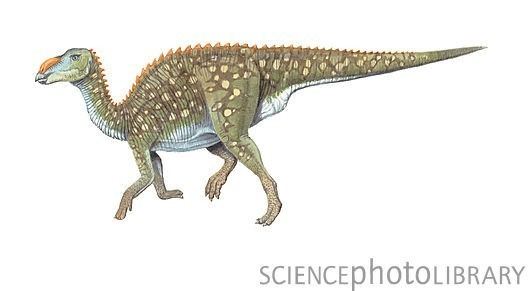Family †Hadrosauridae Scientific name Kerberosaurus manakini Rank Genus | Class Reptilia Suborder †Ornithopoda Phylum Chordata | |
 | ||
Similar | ||
Kerberosaurus (meaning "Kerberos lizard") was a genus of saurolophine duckbill dinosaur from the late Maastrichtian-age Upper Cretaceous Tsagayan Formation of Blagoveshchensk, Amur Region, Russia (dated to 66 million years ago). It is based on bonebed material including skull remains indicating that it was related to Saurolophus and Prosaurolophus.
Contents
History
In 1984, Yuri Bolotsky and the Amur Complex Integrated Research Institute discovered a large dinosaur bonebed at Blagoveschensk. Most of the remains were of Amurosaurus (a lambeosaurine hadrosaur), but some came from turtles, crocodilians, theropods, nodosaurids, and a new hadrosaurine. For the hadrosaurine, cranial material (holotype AENM 1/319, braincase, plus others) was distinctive enough to permit the naming of a new genus.
Description
Diagnostic characters included narrow frontals, unique form of the braincase, and a well-demarcated division between the area of bone surrounding the nostrils and the bone outside of it. No reconstruction of the fragmentary partial skull was offered. In their cladistic analysis, the authors found Kerberosaurus to be the sister taxon to Saurolophus and Prosaurolophus.
Paleobiogeography
Bolotsky and Godefroit (2004) found the paleobiogeographic implications interesting. The relationship they described provides additional support for land links and faunal interchange between eastern Asia and North America at the end of the Cretaceous, as the other two genera are either known only in North America or are known from a species there. The "sauroloph" group would have had to split from the nest closest group, the "edmontosaur" group, in the early Campanian, from Asia, and moved west while leaving a splinter population that would lead to Kerberosaurus, then return to Asia at a later point and produce Saurolophus angustirostris.
Paleobiology
As a hadrosaurid, Kerberosaurus would have been a large bipedal\quadrupedal herbivore, consuming plant matter with complex dental batteries.
